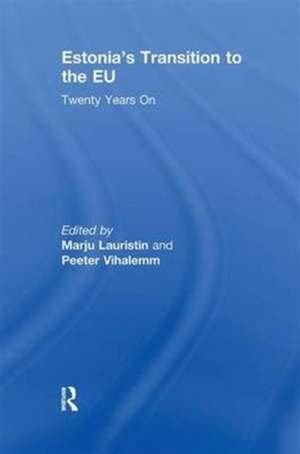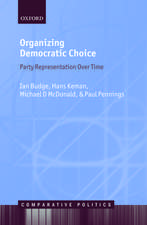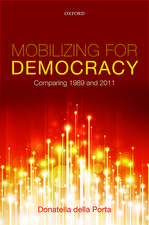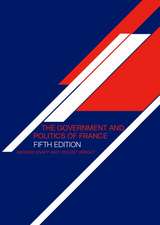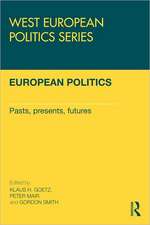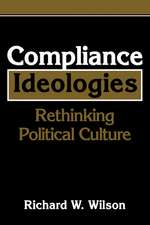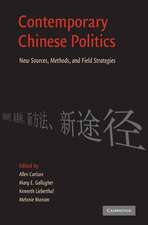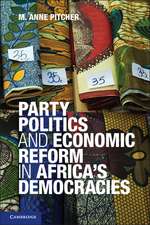Estonia's Transition to the EU: Twenty Years On
Editat de Marju Lauristin, Peeter Vihalemmen Limba Engleză Paperback – 26 mai 2016
This book locates the post-accession period within the broader sweep of post-communist transition and diagnoses the problems facing Estonia as the global economic downturn takes hold and a new mood of pessimism reigns in Central and Eastern Europe. Until recently, Estonia enjoyed an international reputation as an emerging high-growth ‘tiger economy’ and reform pioneer, not least in the sphere of IT. This economic success story, however, masked the continued problematic political and social legacies of the Soviet period, including the issue of ethnic integration, which again hit the headlines following riots in Tallinn in April 2007.
This fully up-to-date appraisal - the first in English - covers all of the key issues, and will appeal to specialists in Baltic and Central and Eastern European politics and society, as well as to anyone with an interest in European integration more generally.
This book was published as a special issue of the Journal of Baltic Studies.
| Toate formatele și edițiile | Preț | Express |
|---|---|---|
| Paperback (1) | 216.07 lei 6-8 săpt. | |
| Taylor & Francis – 26 mai 2016 | 216.07 lei 6-8 săpt. | |
| Hardback (1) | 668.50 lei 6-8 săpt. | |
| Taylor & Francis – 6 oct 2009 | 668.50 lei 6-8 săpt. |
Preț: 216.07 lei
Preț vechi: 258.66 lei
-16% Nou
Puncte Express: 324
Preț estimativ în valută:
41.34€ • 43.28$ • 34.21£
41.34€ • 43.28$ • 34.21£
Carte tipărită la comandă
Livrare economică 05-19 aprilie
Preluare comenzi: 021 569.72.76
Specificații
ISBN-13: 9781138968981
ISBN-10: 1138968986
Pagini: 168
Dimensiuni: 156 x 234 mm
Greutate: 0.45 kg
Ediția:1
Editura: Taylor & Francis
Colecția Routledge
Locul publicării:Oxford, United Kingdom
ISBN-10: 1138968986
Pagini: 168
Dimensiuni: 156 x 234 mm
Greutate: 0.45 kg
Ediția:1
Editura: Taylor & Francis
Colecția Routledge
Locul publicării:Oxford, United Kingdom
Public țintă
PostgraduateCuprins
1. The Political Agenda During Different Periods of Estonian Transformation: External and Internal Factors Marju Lauristin and Peeter Vihalemm 2. The Estonian Tiger Leap from Post-Communism to the Information Society: From Policy to Practice Pille Runnel, Pille Pruulmann-Vengerfeldt and Kristina Reinsalu 3. Emerging Consumer Types in a Transition Culture: Consumption Patterns of Generational and Ethnic Groups in Estonia Veronika Kalmus, Margit Keller and Maie Kiisel 4. The Patterns of Cultural Attitudes and Preferences in Estonia Maarja Lo˜hmus, Marju Lauristin and Eneli Siirman 5. Cultural Differentiation of the Russian Minority Triin Vihalemm and Veronika Kalmus 6. Inter-Ethnic Attitudes and Contacts Between Ethnic Groups in Estonia Ku¨lliki Korts 7. The Bronze Soldier: Identity Threat and Maintenance in Estonia Martin Ehala
Notă biografică
Marju Lauristin is Professor Emeritus at the University of Tartu and works as Professor of Social Communication in the Institute of Journalism and Communication. Her research interests are related to the social, cultural and political conditions and implications of the Estonian post-communist transition.
Peeter Vihalemm is Professor of Media Studies at the Institute of Journalism and Communication, University of Tartu, Estonia. His work has been focused on political and cultural aspects of postcommunist transformation, especially on development of media system and media use, and changing spatial relations in the Baltic Sea region.
Peeter Vihalemm is Professor of Media Studies at the Institute of Journalism and Communication, University of Tartu, Estonia. His work has been focused on political and cultural aspects of postcommunist transformation, especially on development of media system and media use, and changing spatial relations in the Baltic Sea region.
Descriere
This book highlights the main issues and challenges facing the Central and East European countries five years on from their entry to the EU and twenty years on from the fall of communism.
This book was published as a special issue of the Journal of Baltic Studies.
This book was published as a special issue of the Journal of Baltic Studies.
